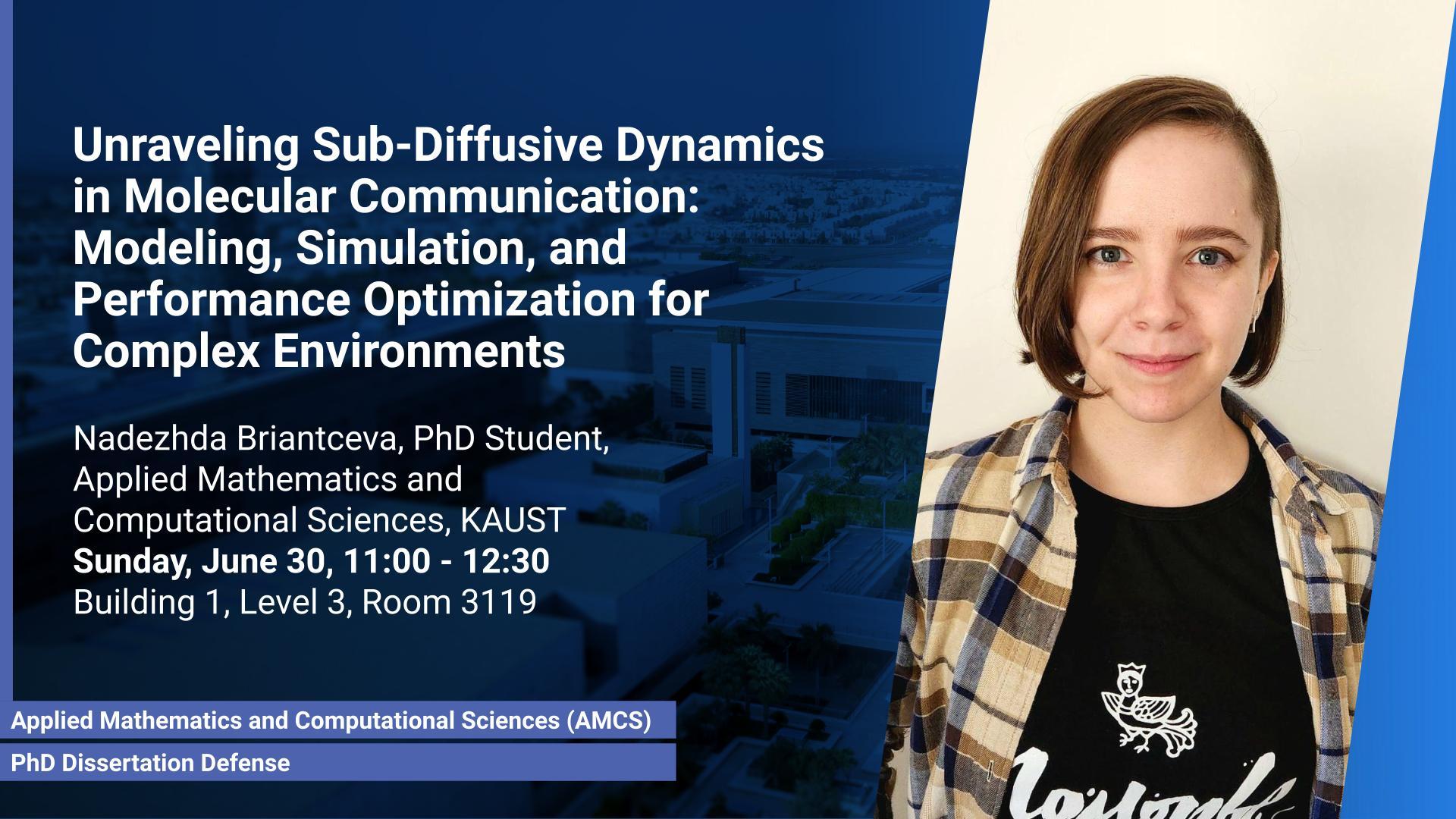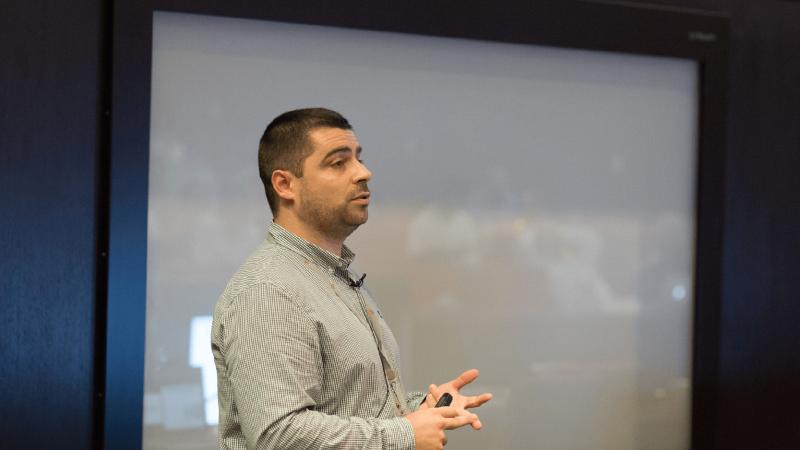Abstract
Molecular communication (MC) is a promising paradigm for information transmission in complex environments, such as living cells and porous media. While most existing works consider standard diffusion, where the mean square displacement (MSD) of information molecules (IMs) scales linearly with time, this dissertation focuses on sub-diffusive dynamics in crowded and complex environments. The primary objectives of this research are to model, simulate, and analyze the performance of MC systems in sub-diffusive environments.
First, we present a 3D MC system with a point transmitter (TX) and a spherical receiver (RX), considering the sub-diffusive behavior of IMs and their evanescence due to degradation. Closed-form expressions for the arrival probability and the first passage time density (FPTD) are derived. The performance of the MC system is investigated using concentration-based modulation techniques, evaluating metrics such as the probability of detection, probability of false alarm, and probability of error for various reaction rates, fractional powers, and receiver radius.
Second, we develop a simulation framework for practical anomalous diffusion-based MC channels using a fully discrete hp-adaptive entropy stable discontinuous collocated Galerkin method. The fractional Brownian motion is employed to model the anomalous diffusion of IMs in 2D and 3D channels with varying geometric complexity. Thus, numerical results of the molecular concentration under different MC channel assumptions are evaluated. Moreover, the framework aims to evaluate the system's communication performance by transmitting different information signals through the channel.
Finally, we consider the sub-diffusive dynamics of IMs in an MC channel with mobile point TX and absorbing RX components. Closed-form expressions for the absorption probability, FPTD, and Cumulative Density Function (CDF) are derived to capture the essence of these complex movements. We incorporate Reed-Solomon (RS) coding and On-Off Keying (OOK) modulation techniques to enhance communication performance. The channel's communication performance is analyzed through mutual information, channel capacity, and bit error probability (BEP) comparison.
This dissertation provides valuable insights into the modeling, simulation, and performance analysis of MC systems in sub-diffusive environments. The results contribute to designing and optimizing robust and efficient MC systems for various applications, such as targeted drug delivery and environmental monitoring.
Brief Biography
Nadezhda Briantceva is a PhD Candidate who works under the supervision of Prof. Mohamed-Slim Alouini and Prof. Matteo Parsani. Her academic journey began at Saint Petersburg State University (SPbSU) in Russia, where she majored in Applied Mathematics and Control Processes. There, she worked on a B.S. project with a collaboration of an IT company in Saint Petersburg, focusing on autonomous vehicles, which marked the start of her interdisciplinary career. At KAUST, she defended her Master's thesis on Molecular Communication (MC) in 2021, where she became interested in combining applied mathematics with health sciences. She actively participated in the ACM NanoCom Conferences and the Workshops on MC during her PhD studies. Recently, she stayed as a Visiting PhD student under the guidance of Prof. Adam Noel at the Biophysical Communication Engineering Lab at Warwick University. Her PhD research investigates the communication performance of various models of anomalous-based MolCom channels, which are affected by the channel flow, evanescence process, and channel components' mobility.

